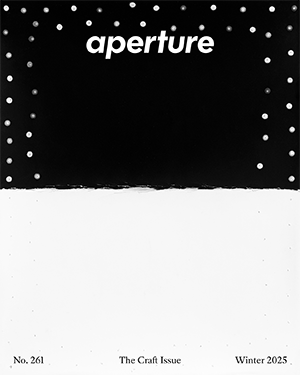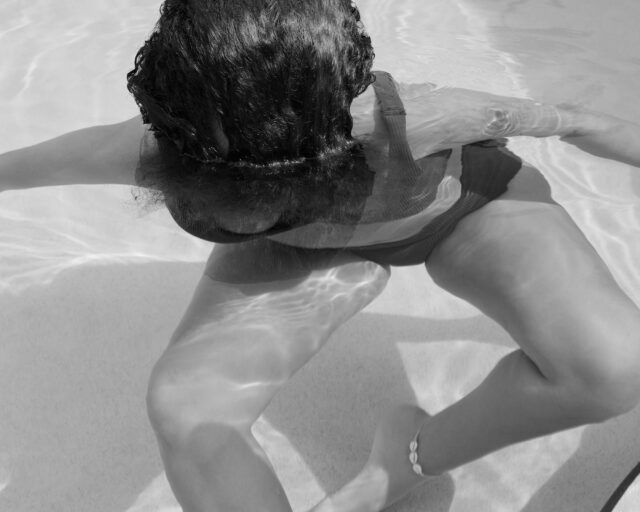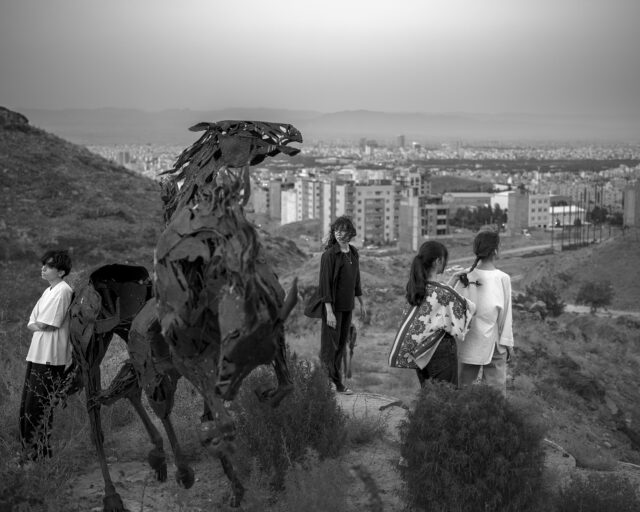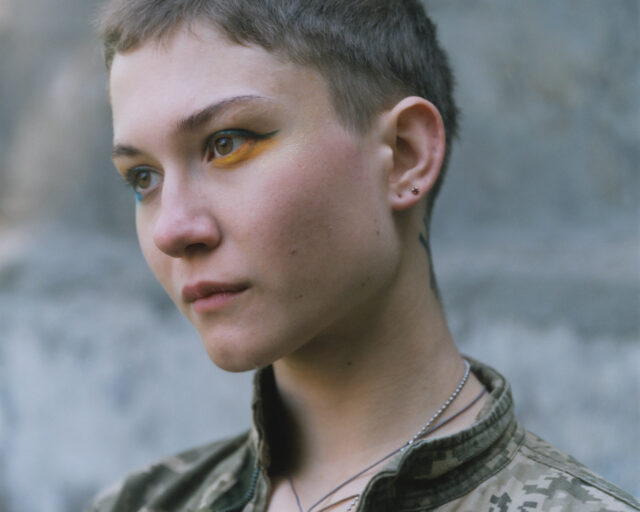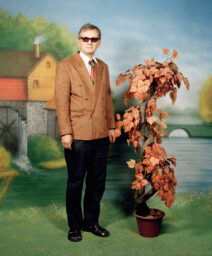2014 Portfolio Prize Runner Up: Max Pinckers
Max Pinckers, from the series Will They Sing Like Raindrops or Leave Me Thirsty, 2013
A popular subgenre within the tradition of Bollywood cinema is known as masala. Like the spice blend of the same name, masala films are known for their heterogeneous mix, packing genres such as romance, comedy, action, drama, and melodrama into the same movie. Although Max Pinckers has made romance the specific focus of his series Will They Sing Like Raindrops or Leave Me Thirsty, it could easily be filed in the masala category. Pinckers’s photographs offer humor, drama, allegory, and poetry.
Visually inspired by the culture of Bollywood—with its dramatized body language, passionate romance, and clashes between tradition and contemporary mores—Pinckers’s delicately constructed situations, and the genuine characters that populate them, are more fragile and nuanced than their cinematic ur-narratives, carefully balancing real-life constraints with the starry-eyed sensations of love. He captures the paradoxes of romance in a city where different generations, religions, and the push-and-pull of past and future have a stronghold on society and culture, even on the film industry.
In one photograph, an older man stands in front of a replica of the Taj Mahal, built in his backyard in honor of his late wife; another shows young lovers exchanging heartfelt messages via paper airplane across corrugated-metal rooftops, a Romeo and Juliet in twenty-first-century Mumbai. A third image shows a young man and woman inside humble living quarters, a place which reveals itself to be one of the shelters built by Love Commandos, a volunteer organization that helps couples escape the obligation of arranged marriage and the continued tradition of honor killings. By grounding his series in real-life barriers to relationships in Mumbai, this body of work bears more gravitas than the photographs initially let on. Pinckers interweaves the group portraits with symbolically pregnant still lifes, often denoting spilled milk, thereby inserting risqué punctuation into the demure cadence of the work.From a formal perspective, Pinckers skillfully blends the visual language of documentary tradition with that of fine art and formal portraiture. The cinematic lighting and carefully calibrated postures of his characters reveal the artist’s hand, and the resulting pictures bear the poise of a murmured, scripted epic. Pinckers, was born in Belgium and raised itinerantly—in Indonesia, Australia, India, and Singapore, before returning to Belgium to study. He has traveled to India to photograph on multiple occasions; this is his second project set in Mumbai. As such, it maintains the formal rigor of the first series, The Fourth Wall, but creates a shorter bridge between the subjects and the viewer: spectators may not always identify with the characters’ circumstances, but the subject inevitably pulls heartstrings. The photographer has resisted the lure of clichés, though. Like a good masala film, Pinckers’s photographs offer a nuanced glimpse into real-life tensions in Mumbai, while both surprising and pleasing the viewer.





Courtesy the artist.
Max Pinckers (born in Brussels, 1988) earned his BA and MFA in photography at the Royal Academy of Fine Arts (KASK) in Ghent, Belgium. His work has been exhibited internationally, including at BOZAR, Centre for Fine Arts, Brussels; FotoMuseum, Antwerp; L’Escale, Levallois, France; and Flanders Center, Osaka, Japan, among others. He has self-published four books: Rheum (2013), The Fourth Wall and Mamihlapinatapai (2012), and Lotus (2011). In 2013, he was nominated by Martin Parr for Best Photobook at the International Fotobookfestival in Kassel, Germany, and was a finalist in the 2013 Paris Photo–Aperture Foundation Photobook Awards.
